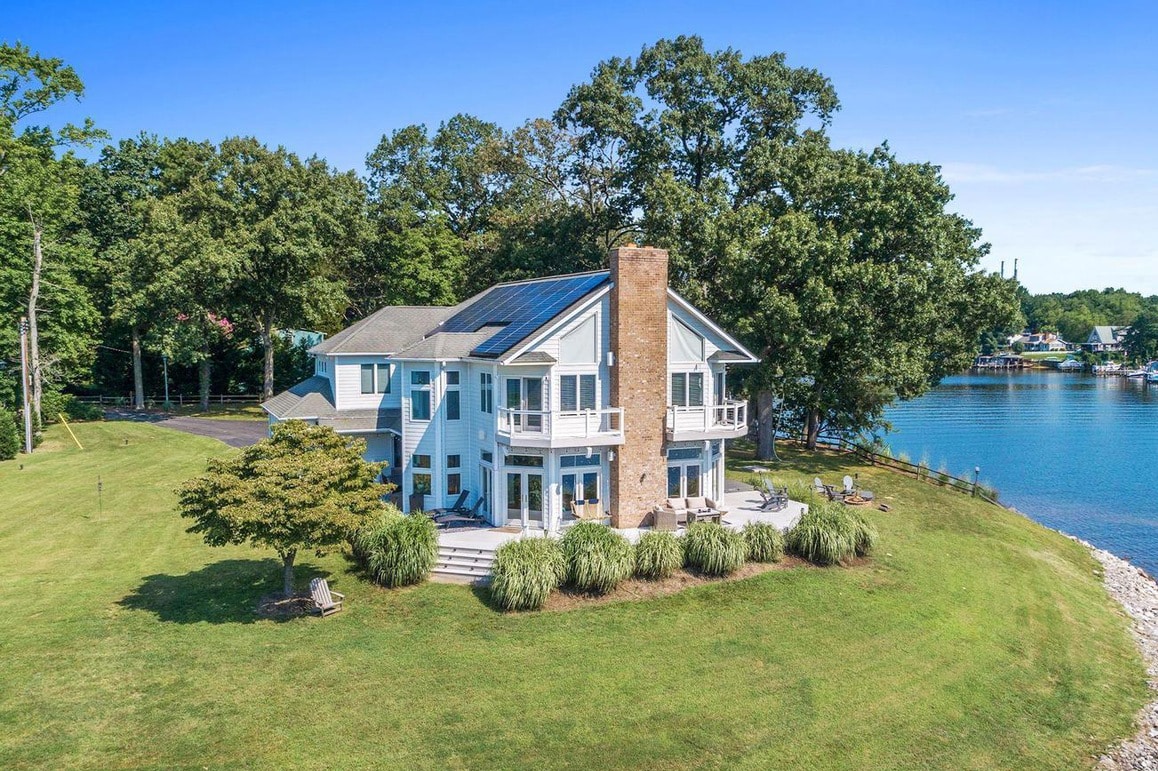For the past 50 years, the Federal Emergency Management Agency (FEMA) has used the same flood risk methodology for calculating insurance premiums. The previous methodology, introduced as part of the National Flood Insurance Act of 1968, calculated homeowner’s risk by analyzing what flood zone their home is in using FEMA’s Flood Insurance Rate Map. But climate change demanded a revision.
Due to climate change, this half-century-old approach no longer reflects a property’s unique flood risk. In fact, a staggering 70% of American homeowners are at risk of flooding. On October 1st, FEMA introduced Risk Rating 2.0, a new pricing methodology for insurance premiums. Rather than relying on flood zones, the National Flood Insurance Program (NFIP) will assess the risk of each individual property. You’ll likely see more reasonable insurance rates that reflect a property’s flood risk, and more accurate flood maps. So, what exactly does this mean?

What is Risk Rating 2.0?
Risk Rating 2.0 aims to accurately reflect the unique risk of each property. Before Risk Rating 2.0, insurance rates would differ dramatically from one zone to another – even if the properties were located across the street from one another. It’s important to know that FEMA’s flood zones will determine whether a property with a mortgage needs flood insurance. Under the previous methodology, many mortgage lenders were legally mandated to require homeowners to purchase flood insurance. However, with Risk Rating 2.0, the insurance premiums for each property will be based on individual risk variables such as:
- Type of water sources (e.g. river, lake, coast, etc.)
- The distance from the coast or other flood source
- Flood frequency
- Flood types (e.g. flash floods, river floods, etc.
- Property characteristics (e.g. cost to rebuild, elevation, etc.)
According to FEMA, the benefits of Risk Rating 2.0 are:
- A more accurate picture of risk at the individual property level
- Rates that are easier for policyholders and insurance agents to understand
- Reflection of more types of flood risk than is currently shown
- Use of up to date actuarial practices to set rates

How will Risk Rating 2.0 impact flood insurance rates?
Under the previous methodology, homeowners could be underinsured while others are paying higher rates for unnecessary coverage. The goal of Risk Rating 2.0 is to ensure that premiums are based on the home’s flood risk. The FEMA flood zone will still determine whether a property is required to have flood insurance, but the premium rates will be based on the individual characteristics of the property, such as proximity to water, rebuild cost, and flood type.
Homes that are not near a flood source and have lower repair costs will likely see a decrease in rates. Properties in high-risk and coastal areas with higher repair costs will likely see an increase in premium. FEMA will comply with existing statutory caps on premium increases, meaning homes won’t experience a year-over-year price hike more than 18%. If you do see a significant rate increase from the changes from Risk Rating 2.0, FEMA has programs in place to offer discounted rates.
FEMA estimates that about 66% of insurance policies will see a $0-$10 premium increase per month, and about 23% will see a decrease of $86 per month, on average. About 7% of customers could see an increase of $10-$20 per month and the remaining 4% may see premiums increase by $20 or more. FEMA insures more than 5 million policyholders. Below is FEMA’s estimated breakout of current number of affected policies and the projected dollar amount change with new policies in place:
| Rate Change (per month) | Policies Affected |
|---|---|
| Immediate decrease | 1,161,539 |
| $10 or less | 3,323,350 |
| Between $10 and $20 | 330,516 |
| Greater than $20 | 192,836 |
Private flood insurance vs. NFIP costs and coverage
Flooding is one of the most common and costly disasters a homeowner may face, and an increase in natural disasters makes flooding a major concern across the U.S. Still, many people don’t have flood insurance. Whether you’re living in Los Angeles, CA, or Miami, FL, floods can happen anywhere, and the number of homes at risk of flooding increases every year. Even if your home is not in a high-risk flood zone, you should consider getting flood insurance.
You can obtain flood insurance through a private flood insurance plan, or, if available in your area, through the NFIP. NFIP is funded and backed by the federal government, which FEMA oversees. Find out if your insurance provider participates in NFIP, or call your provider to inquire about adding flood insurance to your policy. Below are the key differences between NFIP and private flood insurance coverage:
| NFIP | Private Flood Insurance | |
|---|---|---|
| Max rebuild cost | $250,000 | Typically up to $500,000 or higher |
| Availability | All 50 states | May be limited in higher-risk areas |
| Elevation certificate required | Not required | Not required |
| Waiting period | 30 days | 15 days |
| Lender accepted | Yes | Yes |
| Building coverage | Up to $250,000 | Replacement cost |
| Contents coverage | Up to $100,000 | Replacement cost |
| Loss-of-use coverage | No | Yes |
| Loss avoidance coverage (sandbags, etc.) | No | Yes |
| Debris removal | Yes | Yes |
Phase I of Risk Rating 2.0 was implemented on October 1, 2021 for all new policyholders and existing policyholders renewing their policies from October 1, 2021 through March 31, 2022 if all program requirements are complete. Phase II will apply to all remaining policies renewing on or after April 1, 2022.
Check out your state’s Risk Rating 2.0 profile for further explanation of the impacts the new methodology will have in your specific state.
The post Risk Rating 2.0: What to Know About FEMA’s New Flood Insurance System appeared first on Redfin | Real Estate Tips for Home Buying, Selling & More.
